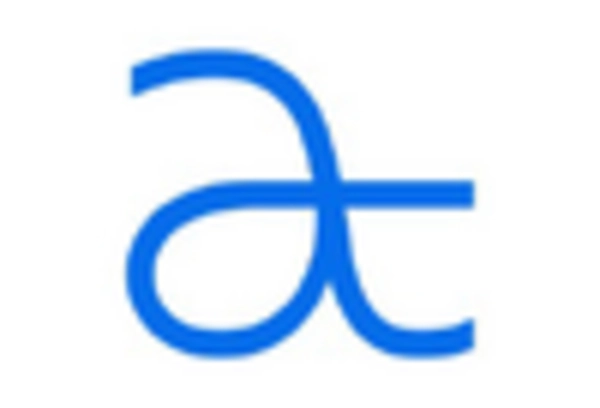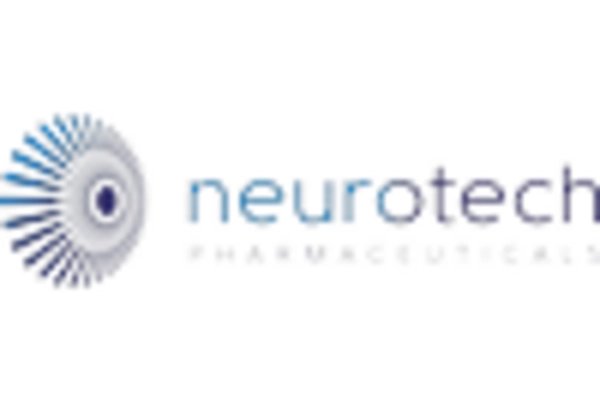Advancements in Biomaterials
The development of advanced biomaterials is significantly influencing the nerve regeneration market. Innovative materials, such as hydrogels and nanofibers, are being engineered to support nerve growth and repair. These biomaterials can mimic the natural extracellular matrix, providing a conducive environment for nerve regeneration. In Japan, the market for biomaterials is projected to grow at a CAGR of around 8% over the next five years. This growth is driven by the increasing application of these materials in surgical procedures and nerve grafting techniques. As researchers continue to explore new biomaterials, the potential for improved clinical outcomes in nerve repair is becoming more apparent, thereby propelling the nerve regeneration market forward.
Government Initiatives and Funding
Government initiatives aimed at enhancing healthcare infrastructure and funding for research are pivotal in shaping the nerve regeneration market. In Japan, the government has allocated substantial resources to support medical research, particularly in regenerative medicine. Recent policies have emphasized the importance of developing innovative therapies for nerve injuries and disorders. This financial backing is expected to stimulate growth in the nerve regeneration market, as it encourages collaboration between academic institutions and industry players. Furthermore, the establishment of research grants and funding programs is likely to accelerate the pace of innovation, ultimately leading to the introduction of novel treatment options for patients suffering from nerve-related conditions.
Growing Awareness and Patient Advocacy
Rising awareness of nerve injuries and the importance of nerve regeneration therapies is influencing the market landscape. Patient advocacy groups in Japan are increasingly promoting education and awareness campaigns about neurological disorders and available treatment options. This heightened awareness is likely to lead to greater patient engagement and demand for nerve regeneration therapies. As patients become more informed about their conditions, they are more likely to seek out advanced treatment options, thereby driving growth in the nerve regeneration market. Additionally, collaboration between healthcare professionals and advocacy groups may facilitate the development of more effective therapies, ultimately benefiting patients and the overall healthcare system.
Rising Incidence of Neurological Disorders
The increasing prevalence of neurological disorders in Japan drives the nerve regeneration market. Conditions such as stroke, traumatic brain injury, and peripheral nerve injuries are becoming more common, leading to a heightened demand for effective treatment options. According to recent statistics, neurological disorders account for approximately 10% of the total disease burden in Japan. This growing patient population necessitates innovative therapies and technologies aimed at nerve repair and regeneration. As healthcare providers seek to address these challenges, investments in research and development within the nerve regeneration market are likely to increase, fostering advancements in treatment methodologies and enhancing patient outcomes.
Aging Population and Increased Healthcare Demand
Japan's aging population is a significant factor driving the nerve regeneration market. As the demographic shifts towards an older population, the incidence of age-related neurological conditions is expected to rise. This trend is likely to increase the demand for effective nerve regeneration therapies. By 2030, it is estimated that over 30% of Japan's population will be aged 65 and older, creating a pressing need for healthcare solutions that address nerve injuries and degenerative diseases. The nerve regeneration market is poised to benefit from this demographic shift, as healthcare providers seek to develop targeted therapies that cater to the unique needs of older patients, thereby enhancing their quality of life.

















Leave a Comment